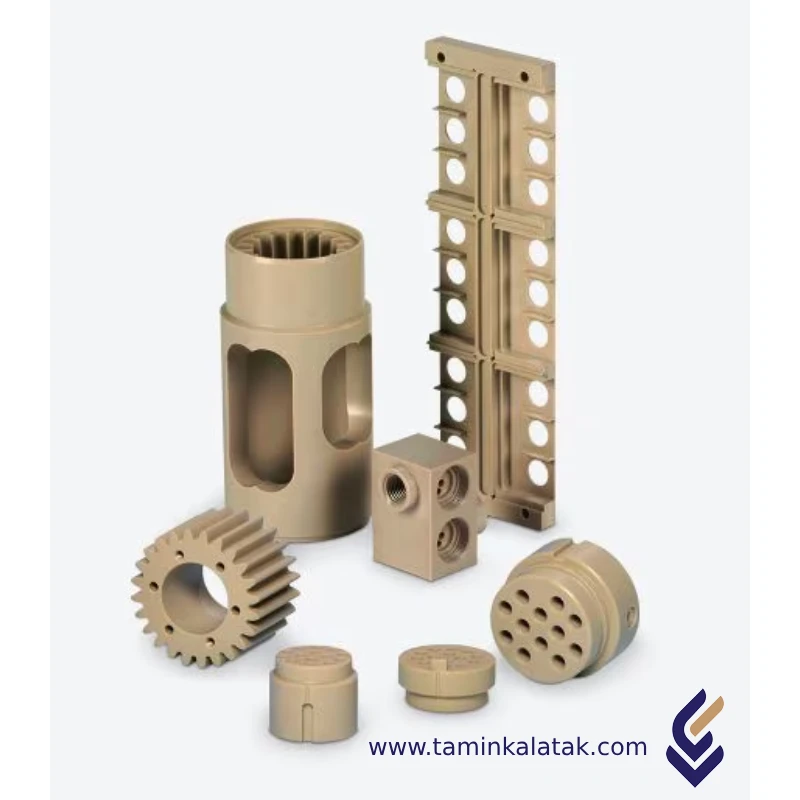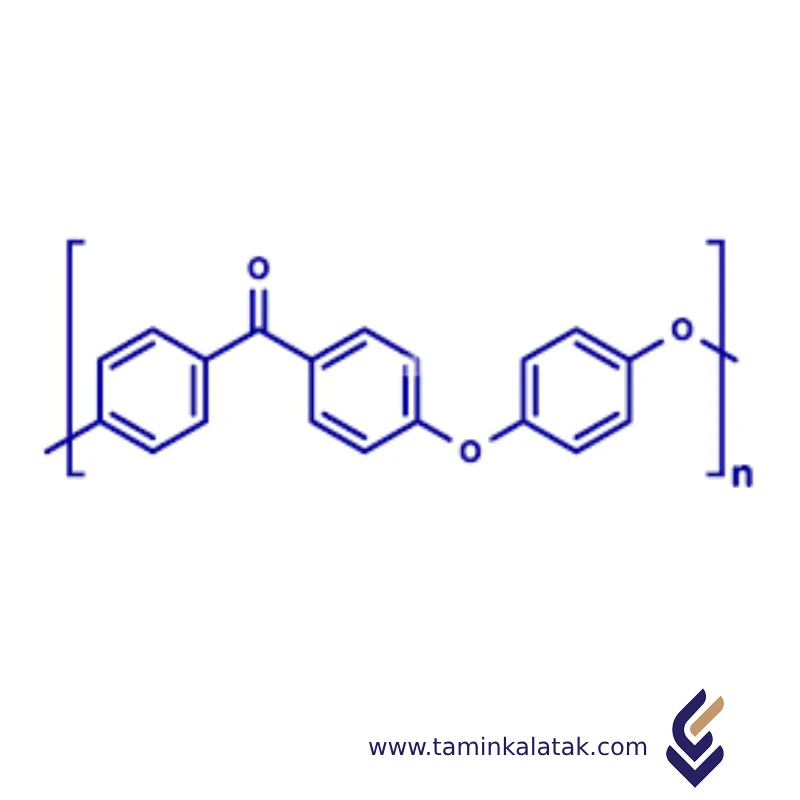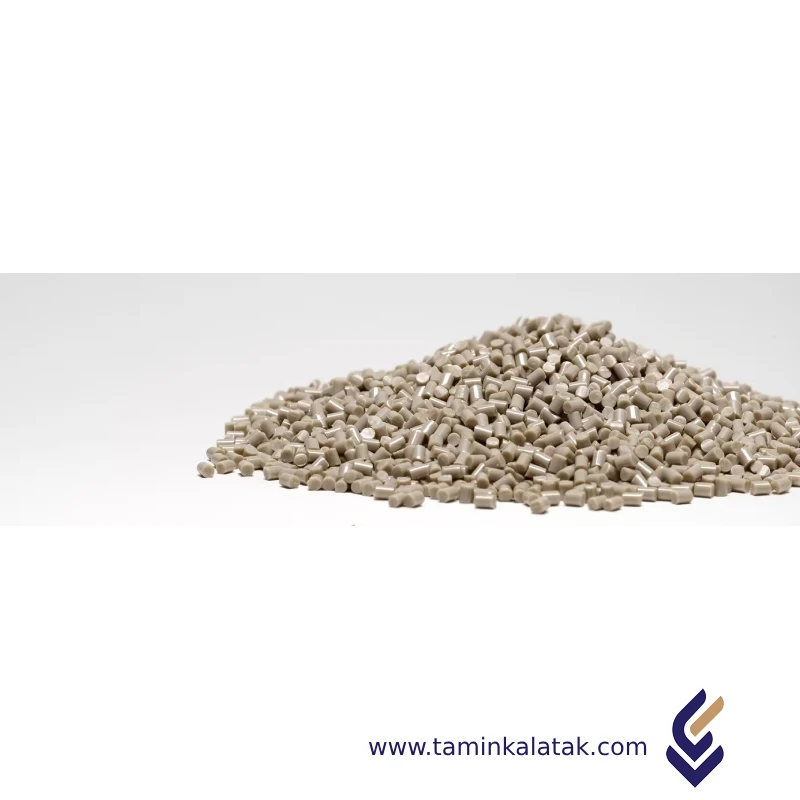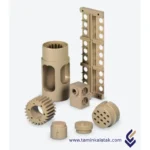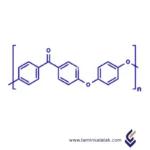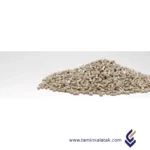Polymers are made up of very large molecules made up of many repeating units called monomers, which ultimately form this long polymer chain
Engineering polymers are high-performance plastics that exhibit superior mechanical, thermal, chemical, and electrical properties compared to standard commodity plastics.
PolyEtherEtherKetone (PEEK)
Polyetheretherketone (PEEK) is a high-performance engineering thermoplastic known for its excellent mechanical, chemical, and thermal properties. It belongs to the polyaryletherketone (PAEK) family and is widely used in demanding applications across industries such as aerospace, automotive, medical, and electronics.
Structure
The structure of Polyetheretherketone (PEEK) consists of an aromatic backbone with repeating ether (-O-) and ketone (C=O) functional groups, which contribute to its high thermal and mechanical stability. Its molecular structure is composed of alternating benzophenone (C=O linked to benzene rings) and ether (-O-) linkages, forming a semi-crystalline polymer. The rigid aromatic rings provide strength and heat resistance, while the flexible ether bonds contribute to toughness and processability. This unique combination of structural elements gives PEEK its exceptional properties, such as high melting temperature, chemical resistance, and excellent mechanical performance under extreme conditions.
Properties
Polyetheretherketone (PEEK) is a high-performance thermoplastic with a unique combination of thermal, mechanical, and chemical properties. It exhibits excellent heat resistance, with a continuous service temperature of up to 250°C and a melting point of 343°C. PEEK has outstanding mechanical strength, high stiffness, and exceptional wear and abrasion resistance, making it suitable for demanding applications. It is highly resistant to chemicals, including acids, bases, and solvents, ensuring durability in harsh environments. The material also has low friction and self-lubricating properties, which enhance its performance in bearings and gears. Additionally, PEEK is biocompatible, making it ideal for medical implants and devices. Its excellent electrical insulation properties allow its use in electronic and electrical applications. Furthermore, it has low flammability, with minimal smoke and toxic gas emissions, contributing to its safety in high-performance applications.
Applications of Polyetheretherketone (PEEK)
- Aerospace: Used in aircraft components, engine parts, and insulation due to its high-temperature resistance and lightweight properties.
- Automotive: Applied in gears, bearings, seals, and electrical connectors for durability and reduced friction.
- Medical: Used in orthopedic implants, spinal cages, and dental prosthetics due to its biocompatibility and sterilization resistance.
- Oil and Gas: Employed in seals, valves, and pump components because of its chemical and pressure resistance.
- Electronics: Utilized in connectors, insulators, and semiconductor manufacturing due to its excellent electrical insulation properties.
- 3D Printing and Manufacturing: Used in additive manufacturing for high-performance components requiring strength and heat resistance.
Advantages of PEEK
- High thermal resistance, maintaining stability up to 250°C.
- Excellent mechanical strength and wear resistance.
- Outstanding chemical resistance to acids, bases, and solvents.
- Low friction and self-lubricating properties.
- Biocompatible and sterilizable for medical applications.
- Excellent electrical insulation properties.
- Low flammability with minimal smoke and toxic gas emissions.
- Lightweight, making it suitable for aerospace and automotive applications.
Disadvantages of PEEK
- High cost compared to conventional plastics.
- Difficult to process due to its high melting temperature.
- Requires specialized equipment for injection molding or machining.
- Limited availability compared to more common polymers.
- Can degrade under prolonged exposure to strong acids and UV radiation.
Applications
| Applications | , , , , |
|---|
PEEK
| Products | MFI(g/10 min) | Density (g/Cm3) | Applications | Process method | Data Sheet | MSDS |
|---|---|---|---|---|---|---|
| PEEK | 3-12 | 13,00 | Bearings, seals, electrical insulation,Seals, gaskets | Injection Molding Extrusion Compression Molding CNC Machining 3D Printing |

